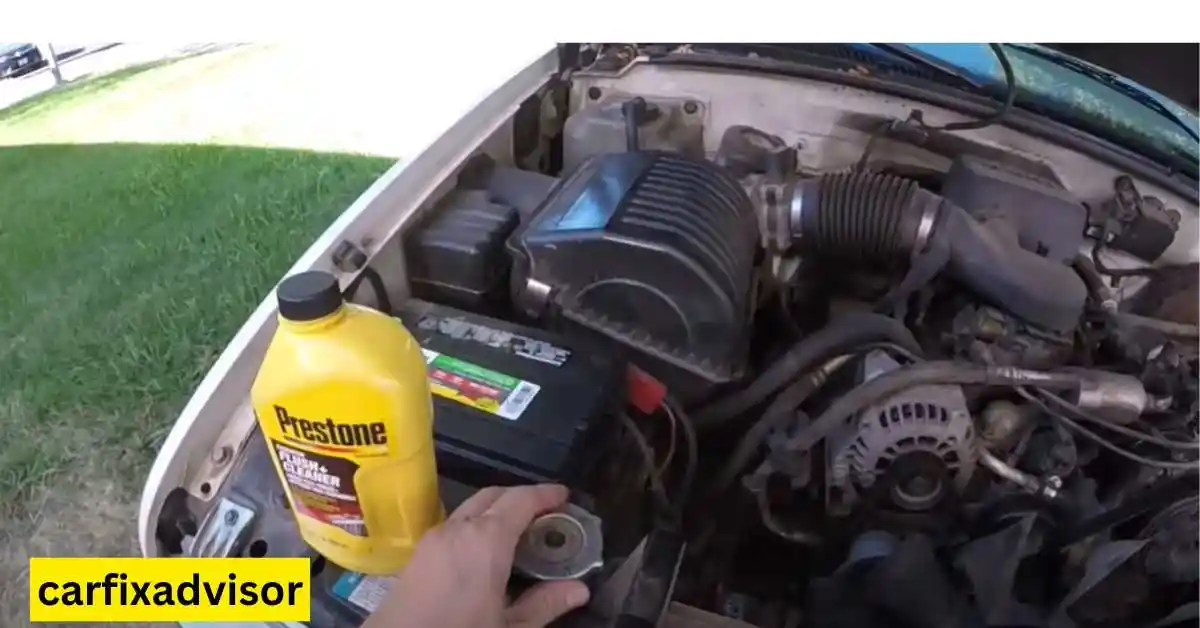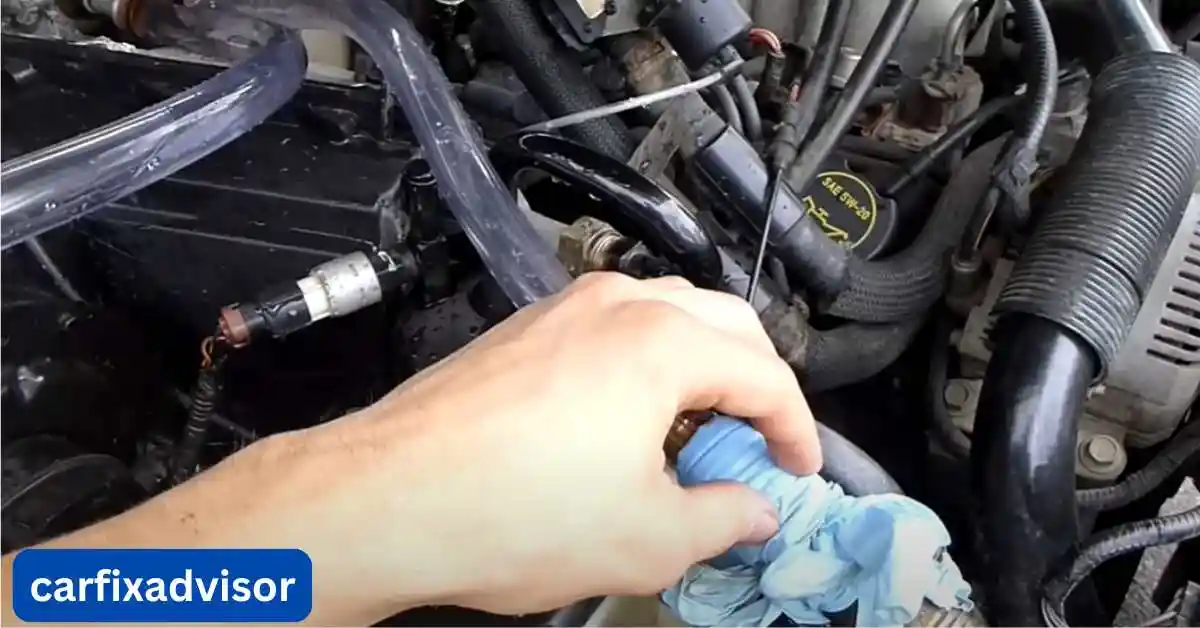A radiator flush is a routine maintenance task that many car owners are familiar with. It’s designed to clear out debris, sludge, and contaminants from the radiator and the entire cooling system, ensuring that the engine runs efficiently. But a common question that arises is whether a radiator flush also cleans the heater core. The heater core plays a crucial role in both heating the cabin and maintaining the overall temperature of the engine, so understanding how a radiator flush affects it is essential.
In this article, we’ll explore whether a radiator flush can clean the heater core, how the two components are related, and what you can do to maintain both for optimal vehicle performance.
What Is a Radiator Flush?
Before delving into the specifics of whether a radiator flush cleans the heater core, let’s define what it is and how it works.
Radiator Flush: A radiator flush involves removing the old coolant from the radiator and replacing it with a cleaning solution, followed by fresh coolant. The flush is typically done to remove buildup, rust, debris, and old coolant from the system, ensuring that the cooling system operates at peak efficiency.
Purpose: The purpose of a radiator flush is to:
- Remove contaminants that could clog the cooling system.
- Improve the overall performance of the radiator and cooling system.
- Prevent overheating and prolong the life of the engine.
What Is a Heater Core?
To understand how the radiator flush might affect the heater core, let’s first define what the heater core does.
Heater Core: The heater core is a small radiator located inside the cabin of your vehicle. It’s responsible for providing heat to the cabin by transferring heat from the engine’s coolant into the air. As coolant passes through the heater core, it heats up, and the blower fan pushes warm air into the cabin.
Function: The heater core works in conjunction with the engine’s cooling system. When the engine coolant circulates through the heater core, it not only helps to keep the engine at the right temperature but also transfers heat to the interior of the car to keep you warm on cold days.
Can a Radiator Flush Clean the Heater Core?
Now, let’s address the main question: Does a radiator flush clean the heater core?
The answer is not always. A radiator flush and the heater core are closely linked, but a radiator flush doesn’t always clean the heater core directly. While the coolant system is interconnected, and the radiator flush involves draining and replacing the coolant that flows through the system, it doesn’t necessarily clean the heater core thoroughly. Here’s why:
1. Limited Reach of the Radiator Flush
- A radiator flush is primarily designed to clean the radiator, which is located at the front of the engine bay. The cleaning solution circulates through the engine’s cooling system, but it doesn’t always reach the heater core effectively.
- The heater core is located inside the cabin, and while some coolant may flow through it during the flush, the solution may not have the power or ability to clean it completely, especially if there is significant clogging or debris buildup inside.
2. Clogging and Sediment in the Heater Core
- Over time, debris, rust, and sludge can accumulate inside the heater core, restricting coolant flow. A radiator flush, while beneficial for removing some buildup from the radiator and cooling system, may not be powerful enough to dislodge the debris within the heater core itself.
- If the heater core is severely clogged, a simple radiator flush may only provide partial cleaning, leaving the core still compromised.
3. Need for Specialized Cleaning
- To clean the heater core thoroughly, you may need a more specialized procedure called a heater core flush. This process involves directly applying a cleaning solution to the heater core and forcing it through with a pressure pump to remove the debris.
- In some cases, the heater core might need to be removed entirely for cleaning if the blockage is severe. This can be a labor-intensive task and may require professional help.
4. Improving Coolant Flow
- While a radiator flush may not directly clean the heater core, it can improve the overall coolant flow throughout the entire system. By clearing out old coolant and debris from the radiator, the flush ensures that the new coolant can circulate more freely, which may improve the flow through the heater core as well, even if it doesn’t fully clean it.
Why Cleaning the Heater Core Is Important
Cleaning the heater core is essential to maintaining a healthy cooling system. Here’s why:
1. Prevent Overheating
- A clogged heater core can lead to overheating because it restricts the coolant flow, which affects the engine’s ability to cool down. If left untreated, this can cause significant engine damage.
2. Improve Heating Performance
- A clean heater core is essential for the cabin’s heating system. If the heater core is clogged, it will reduce the heat transfer, causing the vehicle’s heater to blow cold air. This can lead to discomfort, especially during colder weather.
3. Protect the Cooling System
- The heater core plays an important role in the overall efficiency of the vehicle’s cooling system. Keeping it clean and free from blockages ensures that the entire system runs efficiently, preventing additional stress on other components like the radiator, thermostat, and water pump.
How to Clean a Heater Core
Since a radiator flush may not fully clean a clogged heater core, here are some methods to clean it effectively and restore your vehicle’s heating and cooling performance.
1. Heater Core Flush
- Procedure: A specialized heater core flush uses a strong cleaning solution that is directed specifically at the heater core to dislodge any built-up debris or sludge. This solution is pumped through the heater core under pressure, clearing the blockage and improving the flow of coolant.
- When to Do It: A heater core flush is typically needed when you notice reduced cabin heat or if there are symptoms like foggy windows or coolant leaks inside the cabin.
2. Flushing the Entire Cooling System
- Procedure: If your heater core is slightly clogged but not fully blocked, a general coolant flush can help. When you flush the entire system, some of the cleaner might pass through the heater core, removing minor debris and improving coolant flow.
- When to Do It: You should perform this type of flush during regular maintenance, typically every 30,000 to 50,000 miles, or whenever you change the coolant.
3. Manual Cleaning
- Procedure: For severe clogs, you may need to remove the heater core entirely from the vehicle and manually clean it. This process involves taking out the core, flushing it with water, and using specialized cleaners to remove built-up debris. This method can be time-consuming and may require professional assistance.
- When to Do It: Manual cleaning is usually necessary when the heater core is significantly clogged, and flushing doesn’t resolve the issue.
4. Replacement of the Heater Core
- Procedure: In some cases, a clogged heater core may be beyond cleaning, and the only solution is to replace it. Replacing the heater core requires removing the dashboard and other components in the cabin, making it a more labor-intensive repair.
- When to Do It: If the heater core is beyond cleaning, leaking, or causing other severe engine overheating issues, replacement is the best option.
When Should You Consult a Mechanic?
While some maintenance tasks can be done by car owners, cleaning or replacing a heater core can be a complex task that often requires professional expertise. Here are some situations when it’s best to consult a mechanic:
- Persistent Overheating: If your engine continues to overheat despite regular maintenance, it could indicate a severe issue with the heater core or other parts of the cooling system.
- No Cabin Heat: If your heater stops working completely, it might be time to have the heater core professionally inspected and cleaned or replaced.
- Coolant Leaks Inside the Car: If you notice coolant leaking inside the cabin, it’s a sign that the heater core might be damaged or severely clogged, and professional repair is needed.
Conclusion
While a radiator flush is an essential part of your car’s cooling system maintenance, it doesn’t always clean the heater core effectively. A clogged heater core can lead to reduced heating performance, engine overheating, and other cooling system issues. If you suspect your heater core is clogged, it may require a specialized flush, manual cleaning, or even replacement. Regular maintenance, including coolant changes and radiator flushes, can help keep your car’s heating and cooling system in top condition and prevent these issues from arising in the future.
FAQs On Does a Radiator Flush Clean the Heater Core
1. Can a radiator flush clean the heater core completely?
A radiator flush may not fully clean the heater core, especially if it is severely clogged. While it can help improve coolant flow by removing some debris from the cooling system, a specialized heater core flush or manual cleaning might be needed for more thorough cleaning.
2. How do I know if my heater core is clogged?
Common symptoms of a clogged heater core include reduced cabin heat, coolant leaks inside the vehicle, foggy windows, and engine overheating. If you notice these issues, it could indicate a problem with the heater core.
3. Can flushing the entire cooling system fix a clogged heater core?
Flushing the entire cooling system can help remove minor debris from the heater core, but it’s not a guaranteed fix for a severe clog. If the heater core is heavily blocked, you may need a dedicated heater core flush or manual cleaning to restore its functionality.
4. When should I replace the heater core instead of cleaning it?
If the heater core is leaking coolant inside the cabin, severely clogged, or causing persistent overheating issues, replacement is often necessary. A clogged heater core that cannot be cleaned effectively will require replacement, which is a more complex and costly process.
5. How often should I perform a radiator flush to maintain my cooling system?
It’s recommended to perform a radiator flush every 30,000 to 50,000 miles or as specified by your vehicle’s manufacturer. Regular flushing ensures that the cooling system, including the heater core, remains free from contaminants and functions optimally.
Meta Description
Learn if a radiator flush can clean the heater core, how to maintain both components, and why it’s important for engine efficiency and cabin heating. Find expert tips on flushing and cleaning the heater core.


